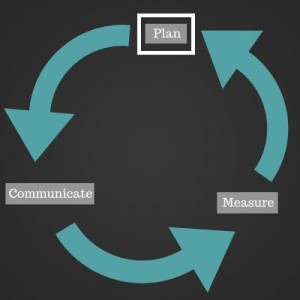Effective launch planning begins with establishing some basic parameters about the product or service being launched, its potential impact in the market and the amount of budget allocated to the launch itself.
A leading practice is to consider 3 categories of launches as in the following table:
| Launch Category
|
Definition
|
Marketing Budget
|
|---|---|---|
| Product or Service Update | Fix or add specific features on existing product or service with minimal incremental market value | Less than 0.1% of annual revenue |
| Promotional | New capabilities that are of customer interest and will drive increased revenue of less than 3% over a 12 month period |
Between 0.25% and 0.75% of annual revenue |
| Market Impact | Significant new capabilities or a new product or service that will have broad market appeal and will impact revenue by more than 3% in a 12 month period |
Over 1% of revenue- likely in the 1% to 2% of annual revenue range |
A Product or Service Update launch is one that typically only impacts existing customers and is communicated on a need to know basis. As such there is no or minimal incremental revenue expected, and there is also no budget allocated for advertising expenses. A common example we all experience is an application upgrade on our smart phones.
A Promotional launch will drive some incremental revenue and require coordination with external resources. Often existing customers will be engaged as champions of the new product, service or feature and advertising expenses in the range of 0.25% to 0.75% of company revenue are typical. An example here would be a new feature that creates some competitive differentiation or enables an extra fee or charge on an existing solution.
A Market Impact launch will drive sufficient incremental revenue as to have material impact on revenue and expense budgets and is impactful to the entire target market or most of it. There are initial customers identified and supported as to be references for sales and advertising and it is typical to spend over 1% of company revenue on the market launch. A new product or service launch is a typical example here.
![]()
Launches are a process NOT an event. There is as significant an effort ahead of the product or service release as there is after. In planning a launch there are typically 4 phases to consider – Initiate, Plan , Execute, and Monitor – as detailed below.
Initiate –This stage is where internal knowledge transfer occurs about the solution or product improvement to the cross functional launch team; an initial launch project plan is created; the kickoff meeting is held; and any key messages are defined. The team typically consists of product marketing and management, corporate and theater marketing, services/support and sales operations
Plan – During the planning stage the project plan is finalized, budgets are confirmed and allocated and metrics/KPIs are identified. The same cross functional team is engaged as in the prior stage and a calendar of events and activities is completed and published to appropriate internal organizations.
Execute – During the Execution phase regular program management meetings are held to track progress against plans with particular focus on project and budget management. Typically executive updates are prepared and distributed and it is during this phase that many of the marketing deliverables occur and the bulk of communications are completed.
Monitor – This phase may last 3 months to over a year and will track success against key performance metrics defined in the Plan phase. Most of these metrics are revenue performance focused in nature. The team will hold regular update meetings (typically monthly) to review and adapt activities based on real-time results and to take lessons learned from this launch and incorporate them into the launch template and other launches that are in earlier phases.
Throughout the launch process for all three launch categories, it is important to identify who needs to be engaged and informed as we will see in a moment. It is also critical to establish clear goals for each category so that the company can understand and measure success versus expectations.
Check in next week and we’ll move on to the Communicating stage of Effective Launch.
